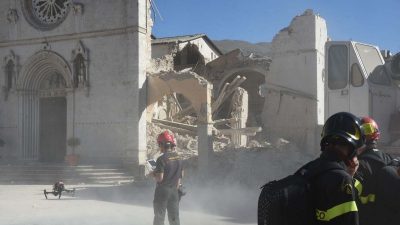The Deadliest Heatwave in Modern History
In the summer of 2003, Europe faced an environmental catastrophe unlike anything seen before. The relentless heatwave, stretching across multiple countries, led to tens of thousands of deaths, overwhelmed hospitals, and crippled essential infrastructure. Cities turned into furnaces, and governments scrambled to respond as people perished in their homes, hospitals ran out of space, and wildfires raged uncontrollably.
But was this just an unfortunate natural disaster, or a clear warning of the climate crisis that the world failed to heed?
1. The Heatwave That Stopped Europe: A Disaster No One Saw Coming
The 2003 European heatwave was an event of unprecedented intensity and duration, stretching from June to mid-August. Countries across Western, Central, and Southern Europe recorded some of the highest temperatures in centuries, with many cities seeing temperatures exceeding 40°C (104°F) for days on end.
The crisis was worsened by Europe’s complete lack of preparedness. Unlike in hotter regions where heatwaves are common, many European homes lacked air conditioning, public awareness was low, and emergency systems were inadequate. This led to a disaster where thousands of vulnerable individuals—particularly the elderly—succumbed to heatstroke, dehydration, and respiratory failure.
This was not just a one-day or one-week heatwave; it lasted for months, drying up rivers, causing wildfires, collapsing power grids, and devastating economies. But the worst impact was on human life—a tragedy that Europe had never faced before on such a scale.
2. The Government’s Greatest Failure: Why Europe Ignored the Warnings
Before the 2003 heatwave, climate experts had already warned that global temperatures were rising and that heatwaves would become more extreme and frequent. However, most European governments failed to take action, dismissing these warnings as unlikely or exaggerated.
Even when temperatures began rising dangerously, there was no sense of urgency from authorities. Instead of mobilising emergency services or issuing nationwide heatwave alerts, many governments ignored the crisis until it was too late.
A major reason for this slow response was the summer holiday season. Many top officials and healthcare workers were away, leaving hospitals understaffed and nursing homes with minimal supervision. In several cases, victims were only discovered days after they had died in overheated apartments, as no one had checked on them.
By the time governments finally reacted, the damage had been done—thousands of lives had already been lost. The lack of heatwave preparation exposed a shocking level of negligence, turning what could have been a manageable crisis into one of the deadliest disasters in European history.
3. The Death Toll: A Tragedy That Stunned the World
- How Many Really Died?
Early estimates suggested 30,000 deaths, but later studies revealed the actual toll was closer to 70,000 fatalities, making it one of the deadliest climate-related disasters in recorded history. - Which Countries Suffered the Most?
France had the highest number of casualties, with over 15,000 deaths, while Italy saw nearly 20,000 fatalities. Spain, Portugal, Germany, and the Netherlands also recorded thousands of heat-related deaths. - The Elderly Were Left to Die
The majority of victims were elderly individuals living alone, many of whom collapsed in their homes due to heat exhaustion and dehydration. In some cases, their bodies were found days or weeks later. - Hospitals Were Overwhelmed
Emergency rooms were flooded with patients suffering from heatstroke, dehydration, and respiratory complications, forcing hospitals to store bodies in makeshift morgues as facilities ran out of space. - Heatstroke, Dehydration & Organ Failure
Many victims died due to heatstroke-induced organ failure, as prolonged exposure to extreme heat caused internal body temperatures to rise beyond survival limits.
4. France’s Nightmare: The Nation That Suffered the Most
France bore the worst of the 2003 heatwave, with over 15,000 deaths, particularly in Paris and other urban areas. The crisis peaked in early August, when temperatures in the capital remained above 40°C (104°F) for days, turning the city into an unbearable death trap.
Hospitals and morgues could not handle the surge in fatalities, leading authorities to use refrigerated trucks to store the dead. Thousands of elderly individuals perished alone in their homes, forgotten and abandoned as the extreme heat took its toll.
The government’s response was widely criticised as slow and ineffective. Public outrage forced the French administration to admit its failure and implement new emergency heatwave protocols in later years. But for many, the damage was already irreversible.
5. A Continent on Fire: How the Heatwave Devastated Europe’s Environment
The impact of the 2003 heatwave wasn’t limited to human casualties—it also ravaged Europe’s natural environment and infrastructure.
- Wildfires Raged Across the Continent
In Portugal and Spain, wildfires destroyed thousands of hectares of forests and farmland, leaving behind a trail of destruction. Portugal suffered one of the worst fire seasons in its history, losing nearly 10% of its total forest cover. - Rivers & Lakes Dried Up
The Rhine, Loire, and Po rivers reached historic low levels, severely impacting transportation, agriculture, and drinking water supplies. - Power Grids Collapsed
France and Italy saw widespread blackouts as electricity demand for air conditioning skyrocketed, putting massive strain on already fragile power infrastructures.
6. Was This Climate Change’s First Deadly Warning to Europe?
Meteorologists and climate experts quickly linked the 2003 heatwave to global warming, calling it the hottest European summer in over 500 years.
Scientists warned that such catastrophic heatwaves would become more frequent unless serious climate action was taken. However, despite the overwhelming evidence, many governments continued to downplay the long-term risks, failing to prioritise climate adaptation measures.
The reality is clear: Europe is not prepared for the heatwaves of the future, and the consequences will only get worse.
7. The Forgotten Victims: Who Suffered the Most?
- Elderly People Died Alone in Care Homes
Thousands of senior citizens succumbed to the heat without access to air conditioning or proper hydration. Many were found days later, abandoned and forgotten. - Low-Income Families Had No Escape
Those in poorer households suffered the most, as many lacked air conditioning or even basic cooling methods, making them highly vulnerable. - Outdoor Workers Were Forced to Work in Deadly Conditions
Farmers, builders, and street workers were exposed to the worst of the heat, with many collapsing from exhaustion and dehydration. - Urban Areas Became Literal Ovens
Cities like Paris, Madrid, and Rome suffered extreme heat island effects, where concrete and asphalt absorbed heat, making urban areas even hotter than surrounding regions.
8. Political Fallout: Governments Blamed & Leaders Shamed
The 2003 heatwave didn’t just expose the vulnerability of Europe’s infrastructure—it also shattered public trust in government responses to climate disasters. In several countries, authorities were accused of negligence, poor crisis management, and failing to protect the most vulnerable citizens.
In France, the government faced an intense public backlash, as thousands of elderly citizens died alone in their homes, often with no emergency services checking on them. The Health Minister was forced to resign, and the government admitted its failure to act quickly.
In Italy, authorities were accused of downplaying the disaster to avoid economic losses in the tourism industry. Reports surfaced of hospitals being overwhelmed with bodies, yet officials delayed taking action to avoid disrupting business.
Across Europe, the heatwave triggered major political debates, with opposition parties attacking ruling governments for their lack of preparedness. Yet, despite these criticisms, many of the promised reforms never fully materialised, leaving Europe just as vulnerable to future extreme heat events.
9. Could This Happen Again? The Answer is Frightening
The 2003 European heatwave was considered an unprecedented disaster at the time, but in the years that followed, heatwaves only became more frequent and more intense. Scientists have confirmed that global temperatures are rising, and if drastic climate action is not taken, similar or even worse heatwaves will occur regularly.
In 2019, 2022, and 2023, Europe experienced record-breaking summer heatwaves, with temperatures surpassing those of 2003 in many areas. Cities such as London, Paris, and Madrid recorded highs of over 40°C, proving that extreme heat is no longer a once-in-a-lifetime event—it is becoming a yearly reality.
One of the biggest concerns is that many European cities remain poorly equipped to handle such extreme heat. While some improvements have been made—such as better heatwave alert systems and increased access to cooling centres—many high-risk areas, particularly poorer communities, still lack proper protection.
The question is no longer “Could this happen again?”—it is “When will the next deadly heatwave strike?”. And if Europe fails to prepare, the consequences could be even worse than in 2003.
10. The Future is Hot: Are Heatwaves Now Europe’s Biggest Threat?
The 2003 heatwave was a warning, but Europe—and the world—still isn’t listening. Scientists predict that if global temperatures continue to rise, heatwaves could become Europe’s deadliest natural disaster, surpassing even floods, storms, and wildfires in terms of human casualties.
In the coming decades, summers could become so extreme that:
- Temperatures of 50°C (122°F) could become the new normal in some parts of Europe.
- Heat-related deaths could multiply unless governments improve climate adaptation measures.
- Water shortages, wildfires, and power grid failures could devastate entire regions.
If action is not taken now, Europe will face a future where extreme heatwaves are not rare disasters but annual occurrences, leading to thousands of preventable deaths each year.
The 2003 disaster should have been a wake-up call. But will governments take real action before it’s too late?
FAQs (Short Answers, Max 3 Lines Each)
How hot did it get during the 2003 heatwave?
Temperatures reached 40–47.5°C (104–117.5°F) in many parts of Europe, making it one of the hottest summers in recorded history.
Which country suffered the highest death toll?
France was the hardest hit, with over 15,000 deaths, followed by Italy, Spain, and Germany, each recording thousands of fatalities.
Was this disaster linked to climate change?
Yes. Scientists confirmed that the 2003 heatwave was directly intensified by global warming, making it one of the first climate-related mass casualty events.
Did governments improve heatwave responses after 2003?
Some changes were made, such as better alert systems and cooling centres, but many areas remain unprepared for extreme heat events.
Could an even deadlier heatwave strike Europe?
Yes. In fact, recent heatwaves in 2019, 2022, and 2023 have already broken records, proving that Europe is facing an increasingly dangerous future.




